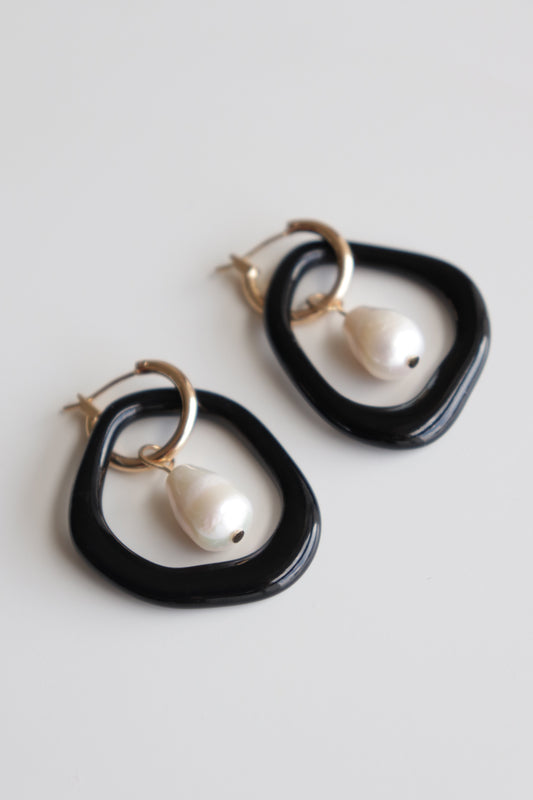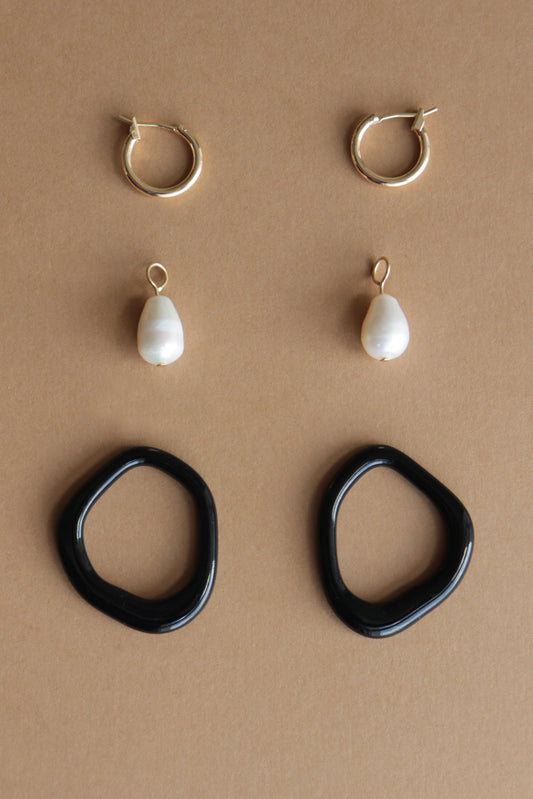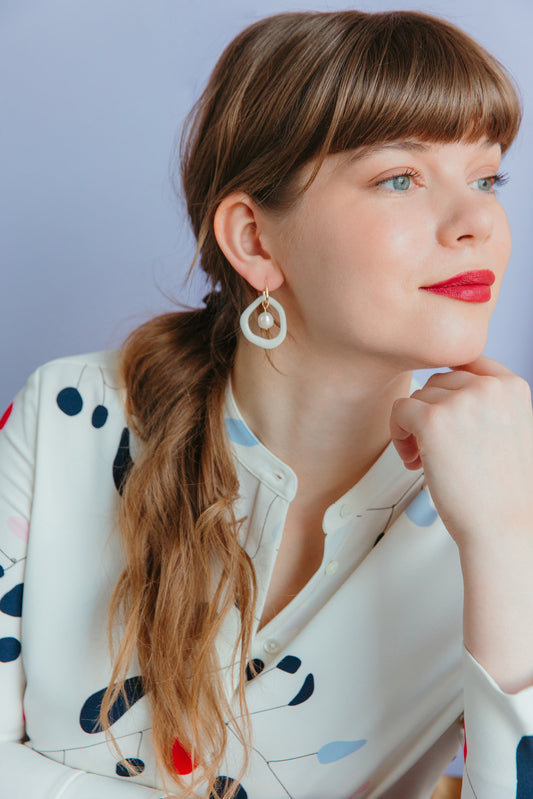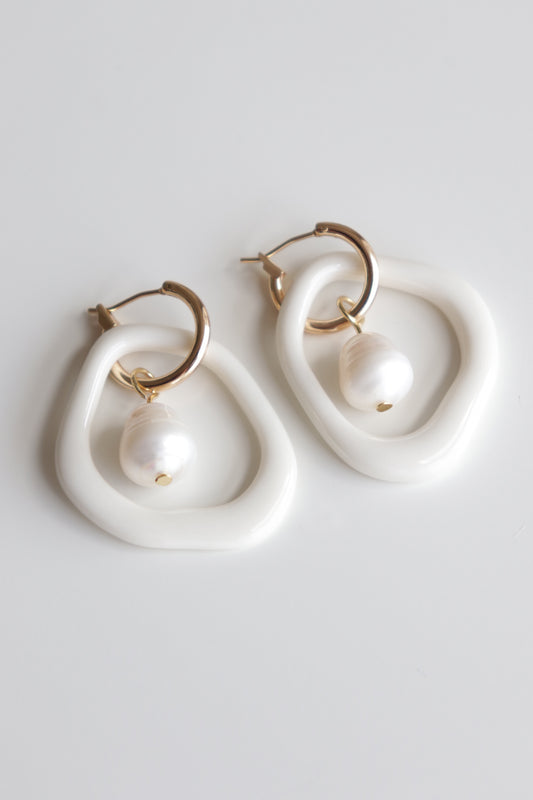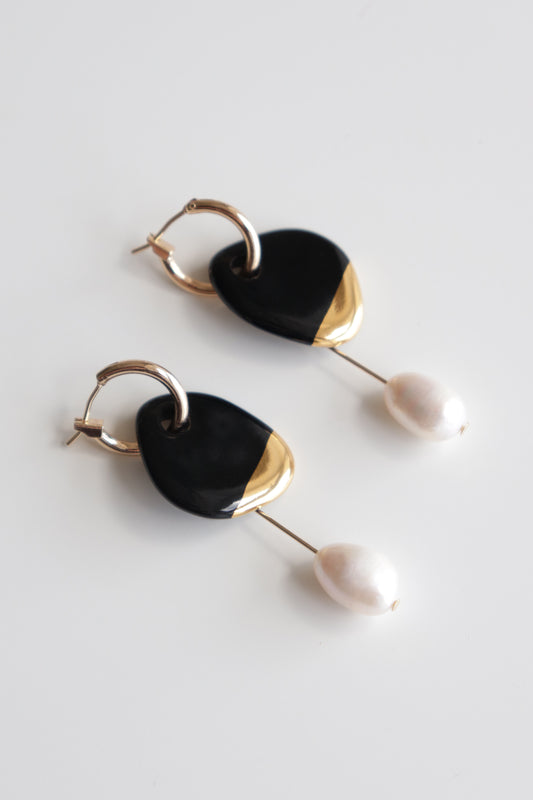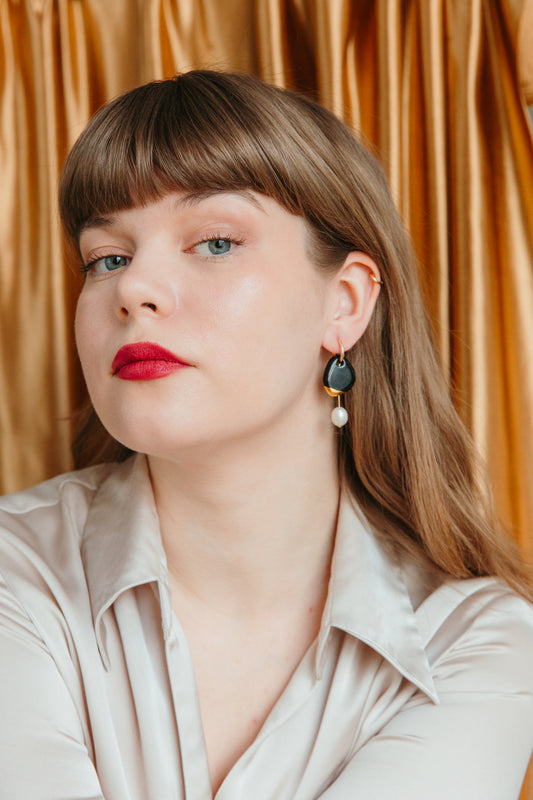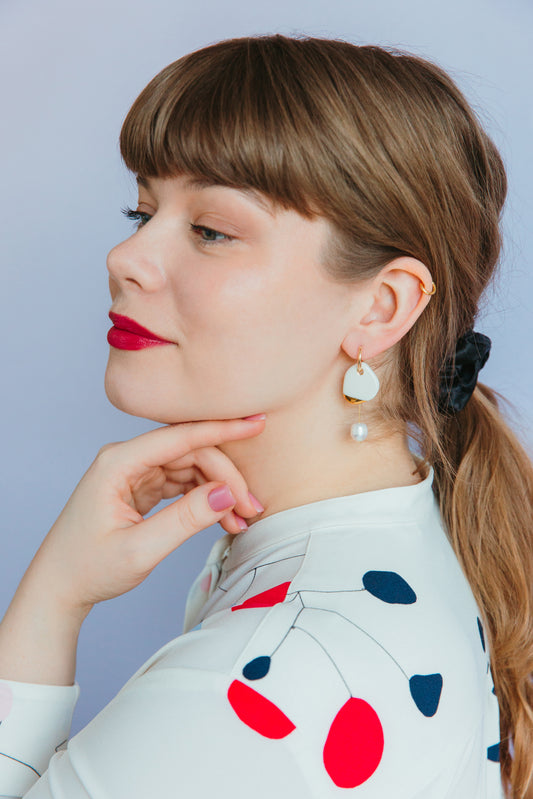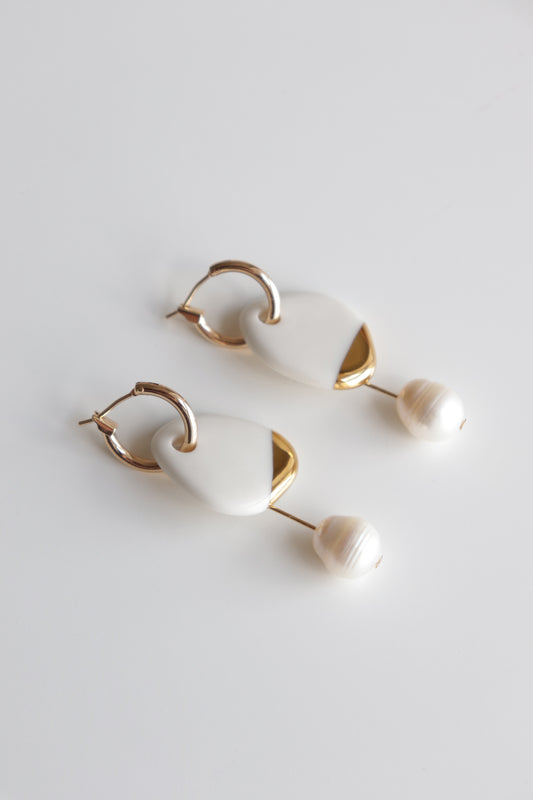The artist and designer Madara Rozentāle has made transformative and uniquely designed porcelain jewelry, combining it with delicate river pearls.
Functional jewelry
In the "Arp" collection, Madara paid particular attention to the functionality of the jewelry, providing versatile application. Delicate porcelain and pearl earrings are made of several elements, which can be combined in different ways.

Earrings consist of four mutually changeable forms. You can take off what feels too much for the moment, or add on what feels right. That way, you get four different versions of wearable art, and you can enjoy wearing porcelain jewelry for special moments and everyday life.

Madara got her inspiration while taking a walk along the seaside, encountering the rounded forms of pebbles and sea-washed wood. Sketch after sketch, and naturally came the idea to complement the jewelry with freshwater pearls, which fit perfectly in a porcelain frame.

High-value Audrey Blackman porcelain, river pearls, and gold-plated elements - all materials have been handpicked carefully to provide sustainability. Our handmade earrings are made in a small workshop in Riga, where the porcelain is burned in a ceramic kiln at 1260C temperature.
Biomorphic abstractionism and Jean Arp
As with most Rozenthal collections, artists and different art styles are another source of inspiration for new jewelry, and the "Arp" collection is no exception. The name of the collection refers to one of Madara’s inspirations - French sculptor Jean Arp. He is one of the founding members of the cultural revolution called Dadaism. Jean Arp is known for abstraction inspired by nature and for mixing artistic creativity with natural forms, although he himself called his art concrete instead of abstract. The forms he uses are not exactly geometric but bulbous and lush.

His art is often described as "biomorphic" - a term that became popular around 1930s. "Bios" means life, while "morphe" means form.

Biomorphic abstractionism was characteristic of the artworks of several popular artists, especially in the middle of the 20th century. Jean Arp, Joan Miro, Barbara Hepworth and Henry Moore are some of the artists that created biomorphs. Sculptures and paintings made by them clearly represented a connection with forms found in nature.

These artworks were famous and liked by art connoisseurs as well as furniture and interior designers of that time, gaining the most popularity in Italy, Scandinavian countries, and the USA. That was the time when abstract organic esthetics flourished through the interior, furniture design, and even industrial produce - cars, typewriters, and Vespa designs.


